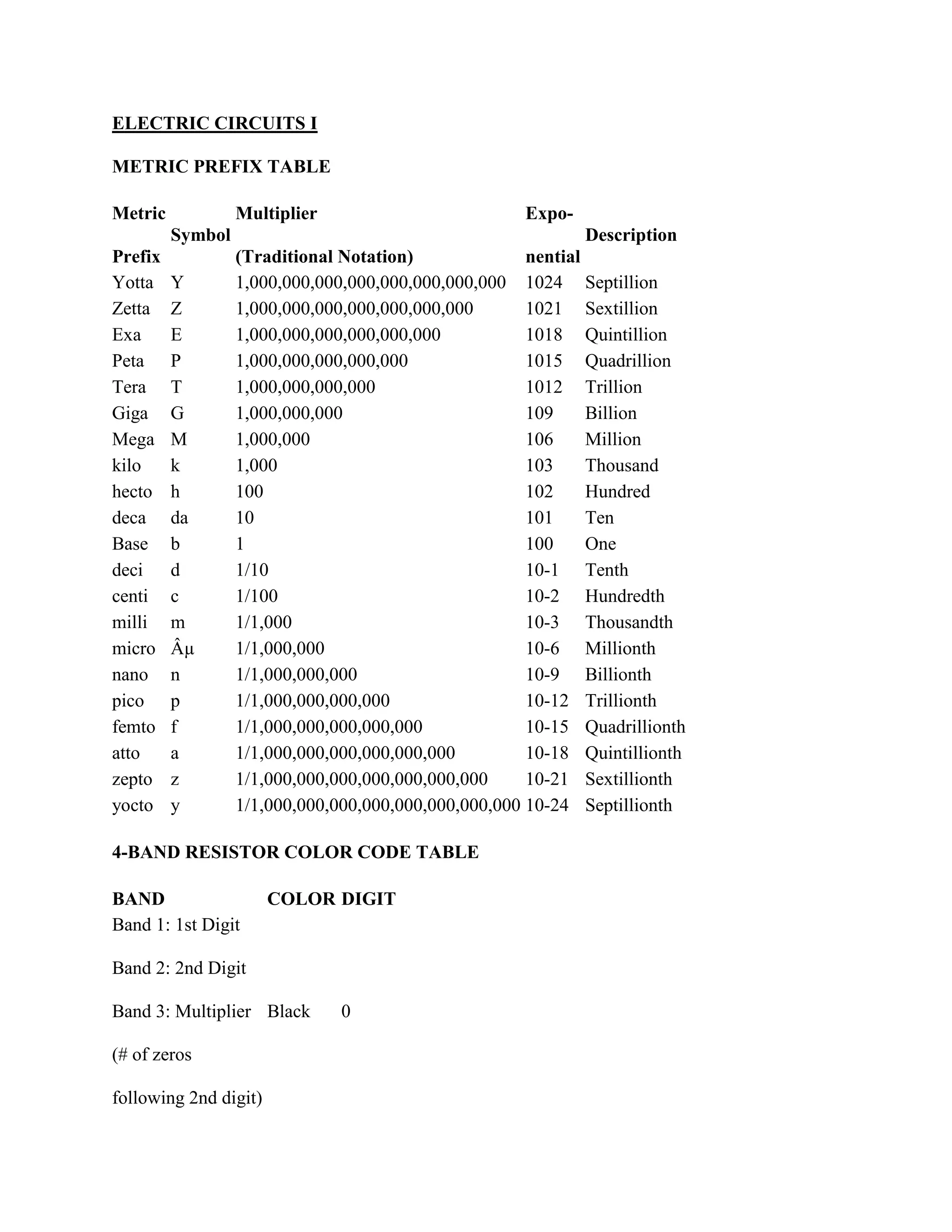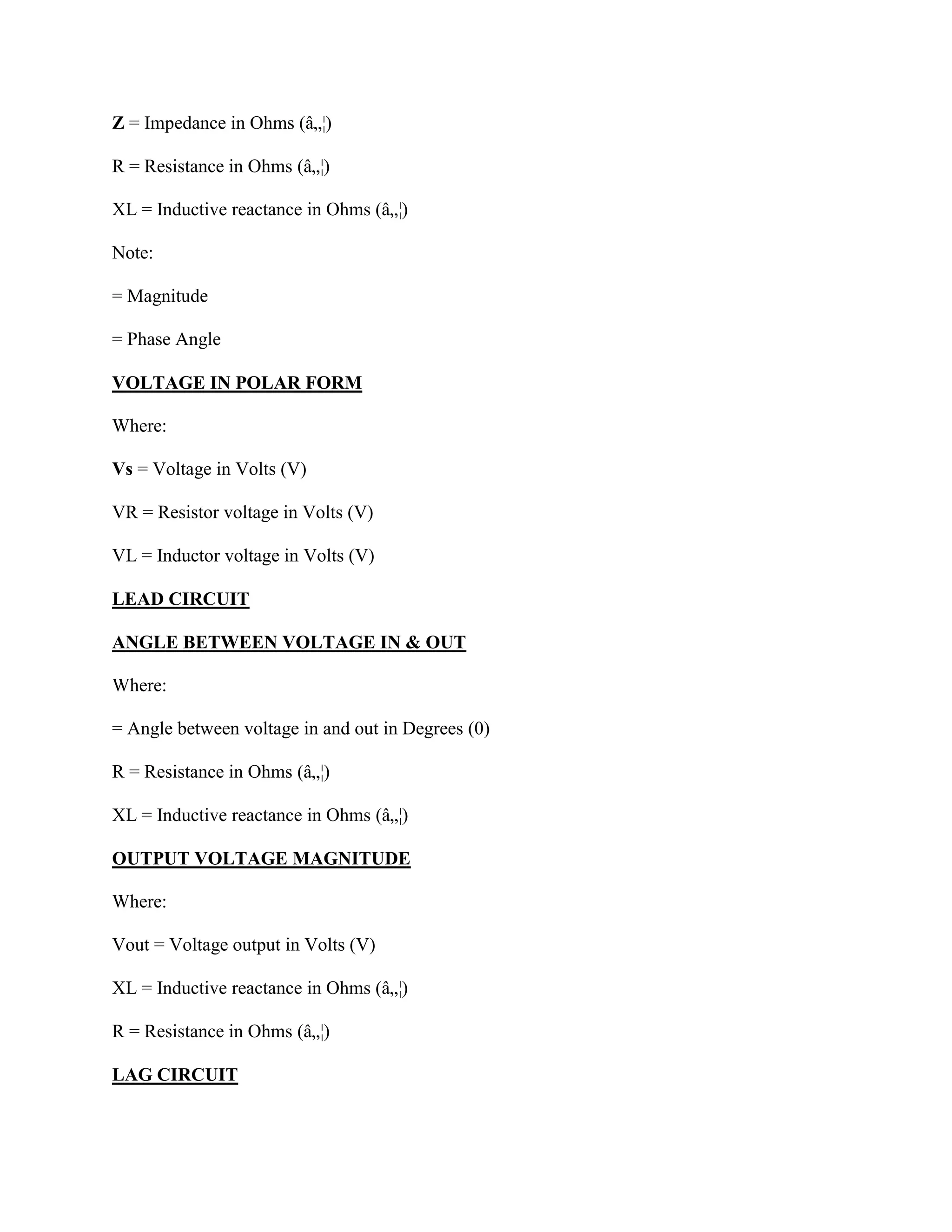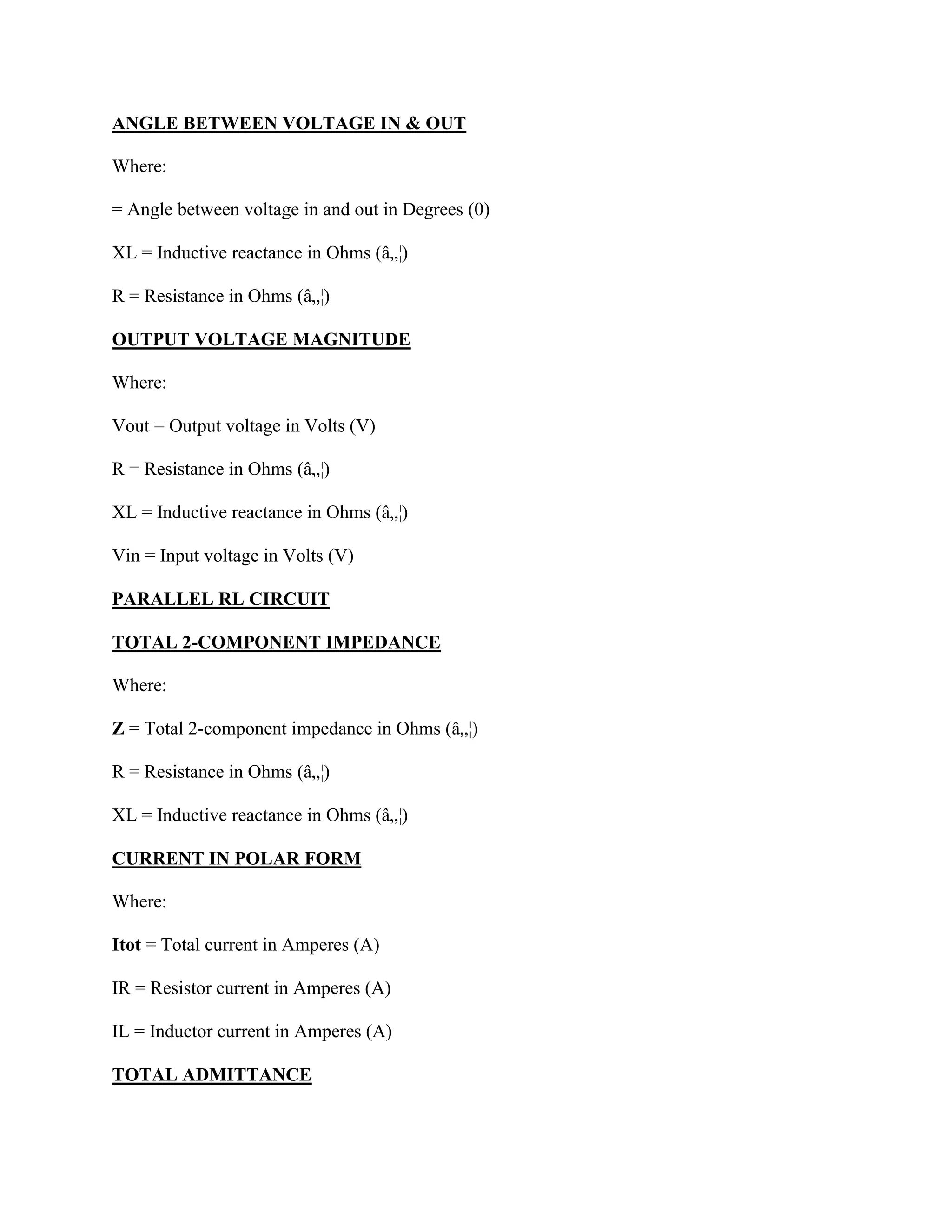This document contains tables and formulas related to electric circuits. The metric prefix table lists scientific notation prefixes and their multipliers used with metric units. Resistor color code tables show the color bands and corresponding digits for 4-band and 5-band resistors. Formulas are provided for circuit concepts like charge, voltage, current, resistance, power, inductance and more. Tables include common circuit formulas, units, and constants.






















































